Month: November 2021
Philip Margo (1942 – 2021) musician
Terence Wilson (1957 – 2021) musician
The First Privilege Walk
Christian Parenti in Nonsite.org:
How Herbert Marcuse’s widow used a Scientology-linked cult’s methodology to gamify Identity Politics and thus helped steer the U.S. Left down the dead-end path of identitarian psychobabble.
In the summer of 2021, a social justice training exercise called the Privilege Walk made headlines when outraged Republican lawmakers Tom Cotton and Dan Crenshaw denounced it on the U.S. Capitol floor as racist. The so-called Privilege Walk, or Power Shuffle, is a workshop activity much beloved by the diversity training industry, in which a group of participants stand together on a line, then each take one step forward or backwards in response to a facilitator reading a series of statements such as: “If you’re a white male, take one step forward. If you were ever made uncomfortable by a joke about your ethnicity, gender, appearance, or sexual orientation, take one step back.” At the end participants find themselves arrayed along a continuum of “privilege.” Thus sorted, discussion ensues.
The Privilege Walk is now a standard element in the diversity training used by nonprofits, churches, universities, corporations, and even some parts of the U.S. military. Proponents of the Walk say it helps us “unlearn oppression” and “build alliances across difference.” Mainstream critics say the exercise propagates divisive identity politics and mock it as foundational to the Oppression Olympics. A Marxist critique would say that the Walk transmogrifies material problems into cultural ones, economic exploitation becomes the more nebulous problem of oppression. Both are forms of domination, yet they are each very distinct. When rendered as oppression, the material problem of class power is replaced by the attitudinal problem of “classism.” Furthermore, the Privilege Walk relies on a methodological individualism that assumes macro-level social phenomena have micro-level causes and solutions.
More here.
Joseph Beuys – FILZ TV 1970
1922: Scenes from a Turbulent Year
Kathryn Hughes at The Guardian:
 Publishers are getting ready to celebrate the centenary of 1922, the year the world emerged from war and pandemic to become recognisably modern. It was then that James Joyce’s Ulysses and TS Eliot’s The Waste Land were published, the USSR and the BBC were established and Tutankhamun’s tomb was discovered. If this last example seems slight by comparison, it is worth remembering that the craze for Egyptian hieroglyphics fed directly into art deco, the visual style that is synonymous with the “roaring 20s” to this day.
Publishers are getting ready to celebrate the centenary of 1922, the year the world emerged from war and pandemic to become recognisably modern. It was then that James Joyce’s Ulysses and TS Eliot’s The Waste Land were published, the USSR and the BBC were established and Tutankhamun’s tomb was discovered. If this last example seems slight by comparison, it is worth remembering that the craze for Egyptian hieroglyphics fed directly into art deco, the visual style that is synonymous with the “roaring 20s” to this day.
Nick Rennison has sensibly got in early, bringing out his Scenes from a Turbulent Year while other authors and publishers are still putting the finishing touches to their manuscripts. In this enjoyable slice of popular history, he assembles a month-by-month almanac, including all the most notable moments from science, politics, art and culture.
more here.
The Young H. G. Wells
Charles Johnson at the NY Times:
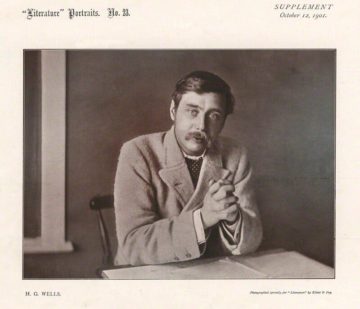 “There was a period when he was turning out 7,000 words a day,” writes Tomalin. “He kept working at what seems an impossible rate, producing stories so varied one might easily think they came from a team of writers.” Few writers will equal his worldwide impact on letters. With Jules Verne and the publisher Hugo Gernsback, he invented the genre of science fiction. A crater on the moon’s far side is named after him. Nominated four times for the Nobel Prize in Literature, Wells, the futurist, foresaw the coming of aircraft, tanks, the sexual revolution, the atomic bomb, and created the classic templates for every story that has been written about alien invasion (his inspiration for “The War of the Worlds,” says Tomalin, was “Tasmania, and the disaster the arrival of the Europeans had been for its people, who were annihilated”) and time travel (he was the first to imagine such travel made possible by a machine).
“There was a period when he was turning out 7,000 words a day,” writes Tomalin. “He kept working at what seems an impossible rate, producing stories so varied one might easily think they came from a team of writers.” Few writers will equal his worldwide impact on letters. With Jules Verne and the publisher Hugo Gernsback, he invented the genre of science fiction. A crater on the moon’s far side is named after him. Nominated four times for the Nobel Prize in Literature, Wells, the futurist, foresaw the coming of aircraft, tanks, the sexual revolution, the atomic bomb, and created the classic templates for every story that has been written about alien invasion (his inspiration for “The War of the Worlds,” says Tomalin, was “Tasmania, and the disaster the arrival of the Europeans had been for its people, who were annihilated”) and time travel (he was the first to imagine such travel made possible by a machine).
more here.
Imagining the Future: Science Fiction and Social Science
Via Crooked Timber.
Hegel today
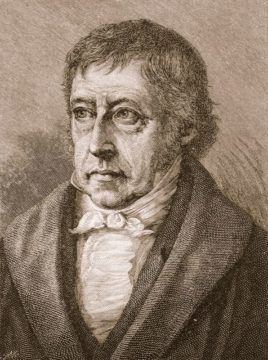 Willem deVries in Aeon:
Willem deVries in Aeon:
To an unusual degree among the great philosophers, G W F Hegel’s influence has waxed and waned. At his death in 1831, he was the reigning voice in German philosophy. His followers, however, soon split into opposed camps: the Right Hegelians, a conservative and religious group, and the Left Hegelians, a socially radical group including Karl Marx. Amid their squabbles, Hegel’s star began to fade in Germany. But in the late 19th century, it once again rose to prominence in the rest of Europe and in the United States. Certain strains of 20th-century Continental philosophy were deeply marked by his influence, such as French existentialism and the Frankfurt school of critical theory. But 20th-century Anglophone philosophy reacted strongly against the neo-Hegelian thought that dominated the universities at the end of the 19th century. In English-speaking lands (including the US), Hegel has lived under a cloud for the past century: his writing too dense, his ideas too abstract, his politics as well as his theology too suspect. His works have been treated with derision in mainstream Anglophone philosophy, and excluded from the canon that trained philosophers need to master.
The logjam that blocked English-language Hegel studies, however, is finally crumbling, and a number of Americans are leading the way. Again, Hegel’s star rises. It isn’t outlandish to suggest that the new openness to Hegel marks an important inflection point in US philosophy.
More here.
Debate the Role of Climate Policy on Surging Energy Prices
 Cedric Durand and Adam Tooze debate if and how the current shortfall in energy supply is directly connected to climate policy. First, Durand over at Sidecar:
Cedric Durand and Adam Tooze debate if and how the current shortfall in energy supply is directly connected to climate policy. First, Durand over at Sidecar:
[C]apitalism has already experienced the first major economic shock related to the transition beyond carbon. The surge in energy prices is due to several factors, including a disorderly rebound from the pandemic, poorly designed energy markets in the UK and EU which exacerbate price volatility, and Russia’s willingness to secure its long-term energy incomes. However, at a more structural level, the impact of first efforts made to restrict the use of fossil fuels cannot be overlooked. Due to government limits on coal burning, plus shareholders’ growing reluctance to commit to projects that could be largely obsolete in thirty years, investment in fossil fuel has been falling. Although this contraction of the supply is not enough to save the climate, it is still proving too much for capitalist growth.
Putting together several recent events gives a taste of things to come. In the Punjab region of India, severe shortages of coal have caused unscheduled power blackouts. In China, more than half the provincial jurisdictions have imposed strict power-rationing measures. Several companies, including key Apple suppliers, have recently been forced to halt or reduce operations at facilities in Jiangsu province, after local governments restricted the supply of electricity. Those restrictions were an attempt to comply with national emissions targets by restricting coal-fired power generation, which still accounts for about two thirds of China’s electricity.
Next, Tooze over at Chartbook:
The attraction of this kind of argument for a crisis-theorist of a Marxist bent is obvious. It has about it the ring of a contradiction from which one could then derive a general crisis model. It has also had a surprising amount of currency in the pages of the FT. It is, after all, a plausible-seeming scenario. But, as an account of the 2021 energy crisis it is fundamentally misleading. It attributes far too much influence to climate policy and mistakes the basic dynamics of investment in the sector. Read more »
Glowing Worms Could Shed Light On the Secrets of Regeneration
Jennifer Ouellette in WIRED:
 IN 1961, OSAMU SHIMOMURA AND Frank Johnson isolated a protein from jellyfish that glow green under UV light. Corals, too, can fluoresce in a wide range of hues, thanks to similar proteins. Now scientists at Harvard University have genetically modified the three-banded panther worm to enable the creature to emit a similar green glow, according to a new paper published in the journal Developmental Cell. Their hope is to uncover the secrets to regeneration.
IN 1961, OSAMU SHIMOMURA AND Frank Johnson isolated a protein from jellyfish that glow green under UV light. Corals, too, can fluoresce in a wide range of hues, thanks to similar proteins. Now scientists at Harvard University have genetically modified the three-banded panther worm to enable the creature to emit a similar green glow, according to a new paper published in the journal Developmental Cell. Their hope is to uncover the secrets to regeneration.
Most animals exhibit some form of regeneration: regrowing hair, for instance, or knitting a fractured bone back together. But some creatures are capable of particularly amazing regenerative feats, and studying the mechanisms by which they accomplish these could have important implications for human aging. If a salamander loses a leg, the limb will grow back, for example, while some geckos can detach their tails as a distraction to evade predators and then regrow them later. The zebra fish can regrow a lost or damaged fin, as well as repairing a damaged heart, retina, pancreas, brain, or spinal cord. Cut a planarian flatworm, a jellyfish, or a sea anemone in half, and it will regenerate its entire body.
And then there is the three-banded panther worm (Hofstenia miamia), a tiny creature that looks a bit like a plump grain of rice, so named because of its trademark trio of cream-colored stripes across its body. If a panther worm is cut into three parts, each part will generate into a fully formed worm within eight weeks or so.
More here.
In 19th-Century New England, This Amateur Geologist Created Her Own Cabinet of Curiosities
Reed Gochberg in Smithsonian:
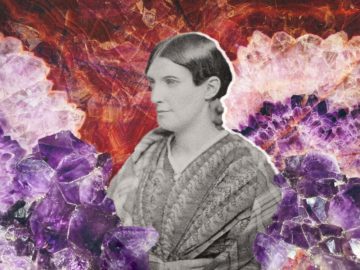 On Christmas Day in 1839, 17-year-old Ellen Sewall received gifts from two suitors who happened, unfortunately, to be brothers. From John, she received a pale pink opal. From Henry, she received a collection of poems. Within a year, she had rejected both men’s offers of marriage—but she kept their gifts.
On Christmas Day in 1839, 17-year-old Ellen Sewall received gifts from two suitors who happened, unfortunately, to be brothers. From John, she received a pale pink opal. From Henry, she received a collection of poems. Within a year, she had rejected both men’s offers of marriage—but she kept their gifts.
Sewall (later Osgood) had crossed paths with the Thoreau brothers that summer while visiting her aunt in Concord, Massachusetts. She would remain friends with the younger sibling, Henry David Thoreau, for the rest of her life and the elder, John Thoreau Jr., until his sudden death three years later from tetanus. At some point around a decade after they first met, Henry, who would go on to become a Transcendentalist philosopher and the author of Walden, sent Osgood another gift: an intricately built box designed to hold rocks and minerals. Now housed at the Concord Museum, this box—and the collection of specimens within it—has long been classified as the property of Osgood’s husband, Joseph, a minister and education reformer. In truth, however, the collection belonged to Ellen. It was the product of her lifelong interest in geology and her friendship with the now-famous Henry.
More here.
Saturday Poem
Introduction to Poetry
I ask them to take a poem
and hold it up to the light
like a color slide
or press an ear against its hive.
I say drop a mouse into a poem
and watch him probe his way out,
or walk inside the poem’s room
and feel the walls for a light switch.
I want them to waterski
across the surface of a poem
waving at the author’s name on the shore.
But all they want to do
is tie the poem to a chair with rope
and torture a confession out of it.
They begin beating it with a hose
to find out what it really means.
Fashion is the medium and the message
Richard Thompson Ford in The Hedgehog Review:
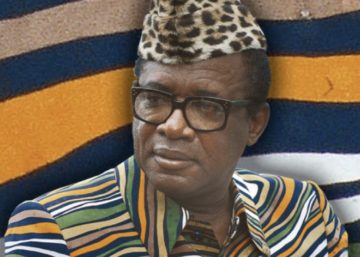 The pursuit of authenticity in fashion has taken more than a few interesting turns in the modern world. Consider its role in the political project of President Mobutu Sese Seko of Zaire, who during the early 1970s imposed a series of cultural reforms known as the retour à l’authenticité (return to authenticity) designed to rid the nation of European influences. Cities named after Europeans and colonial officials were given African names: Leopoldville became Kinshasa; Stanleyville, named after the Welsh explorer who established European rule, became Kisangani. Mobutu’s government encouraged citizens to change their Christian names and threatened any parent giving a child a Western name with five years’ imprisonment.
The pursuit of authenticity in fashion has taken more than a few interesting turns in the modern world. Consider its role in the political project of President Mobutu Sese Seko of Zaire, who during the early 1970s imposed a series of cultural reforms known as the retour à l’authenticité (return to authenticity) designed to rid the nation of European influences. Cities named after Europeans and colonial officials were given African names: Leopoldville became Kinshasa; Stanleyville, named after the Welsh explorer who established European rule, became Kisangani. Mobutu’s government encouraged citizens to change their Christian names and threatened any parent giving a child a Western name with five years’ imprisonment.
Mobutu also banned European attire, imposing a sort of national uniform—a Mao-style tunic called an abacost—short for à bas le costume, or “down with the suit”—inspired by a visit to the People’s Republic of China in 1973. The abacost, thick horn-rim glasses, and a leopard-skin fez or toque became the signature style of dress for Mobutu, who controlled Zaire until 1997.
More here.
Why our thoughts and actions are essential to any model of the universe
Jenann Ismael at the IAI:
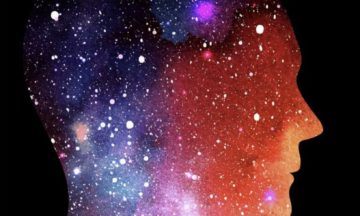 Any attempt to describe the universe as a totality inevitably involves self-reference. This isn’t something that one often confronts in physics. Most day-to-day physics is modelling other systems: cells, gases, planets. We maintain a separation of subject and object, or of investigator and system being investigated. And even though cosmology is explicitly devoted to the study of the universe as a whole, it is customary in cosmology to maintain the imaginative fiction that we – the people modelling the universe – are looking at it from the outside. We adopt, that is to say, the God’s Eye View.
Any attempt to describe the universe as a totality inevitably involves self-reference. This isn’t something that one often confronts in physics. Most day-to-day physics is modelling other systems: cells, gases, planets. We maintain a separation of subject and object, or of investigator and system being investigated. And even though cosmology is explicitly devoted to the study of the universe as a whole, it is customary in cosmology to maintain the imaginative fiction that we – the people modelling the universe – are looking at it from the outside. We adopt, that is to say, the God’s Eye View.
Ultimately, though, we are part of the universe. And that means that however we regiment the universe, whatever regime we work in, if we aim for a theory that describes all of existence, self-reference is unavoidable. Any system that is modelling the universe as a whole – aiming for full coverage of all of existence – is going to encounter self-reference. This is something that we can ignore in some contexts. It matters in others.
The people that have unavoidably encountered it are people who are trying to program an artificial general intelligence (an AGI).
More here.
Farid Ayaz sings “Khabar-e-Tahayyur-e-Ishq Sun”
Science needs conformity — but not the kind it has right now
M. Anthony Mills in The New Atlantis:
 What is worrisome about the lab-leak controversy therefore is not only that our public discussions and political decisions about Covid-19 may have been hampered by the experts’ mischaracterization of scientific knowledge. The long-term danger is that the experts themselves have helped to undermine public trust in scientific expertise and the institutions that depend on it, at a moment when such knowledge is more deeply intertwined with our social and political life than ever before.
What is worrisome about the lab-leak controversy therefore is not only that our public discussions and political decisions about Covid-19 may have been hampered by the experts’ mischaracterization of scientific knowledge. The long-term danger is that the experts themselves have helped to undermine public trust in scientific expertise and the institutions that depend on it, at a moment when such knowledge is more deeply intertwined with our social and political life than ever before.
To help us understand what went wrong, we need to ask again what “scientific consensus” really means, and how the experts got it so wrong in discussing Covid’s origins. One tempting response, particularly to those already primed to distrust elites, is to conclude that scientific consensus is inherently dangerous — little more than self-deluded group think, or a tool for manipulating the public. But that is the wrong conclusion to draw. Consensus, rightly understood, is a distinguishing feature of modern science, indispensable to its progress, and part of its well-earned authority in understanding the natural world — it deserves a defense.
More here.
In Our Time: Frankenstein
https://www.youtube.com/watch?v=v2aEhH6FGDc
Céline Sciamma: Mother Of Invention
at Sight and Sound:
 Petite maman seems an unlikely project for Sciamma, who has tended to be very much a realist director. Yet the film is absolutely of a piece with her previous depictions of female experience at different ages – whether depicting the shifting identities and burgeoning desires of teenagers in her debut Water Lilies (2007) and her breakthrough film Girlhood (2014) or investigating nonconformist gender identity at an earlier age, in her altogether ahead-of-its-time Tomboy (2011). It was 2019’s ambitious Portrait of a Lady on Fire – a lesbian romance set in the 18th century – that confirmed her international auteur renown and that also made her a prominent figurehead in contemporary women’s cinema (even a name emblazoned on T-shirts). But Portrait also marked a shift from conventional realism into a stripped back, imaginative realm of poetic filmmaking, an investigation she pursues further in the concise (72-minute), sparely crafted Petite maman.
Petite maman seems an unlikely project for Sciamma, who has tended to be very much a realist director. Yet the film is absolutely of a piece with her previous depictions of female experience at different ages – whether depicting the shifting identities and burgeoning desires of teenagers in her debut Water Lilies (2007) and her breakthrough film Girlhood (2014) or investigating nonconformist gender identity at an earlier age, in her altogether ahead-of-its-time Tomboy (2011). It was 2019’s ambitious Portrait of a Lady on Fire – a lesbian romance set in the 18th century – that confirmed her international auteur renown and that also made her a prominent figurehead in contemporary women’s cinema (even a name emblazoned on T-shirts). But Portrait also marked a shift from conventional realism into a stripped back, imaginative realm of poetic filmmaking, an investigation she pursues further in the concise (72-minute), sparely crafted Petite maman.
more here.
Sophie Calle and the Art of Leaving a Trace
Lili Owen Rowlands at The New Yorker:
 Although there is something oblique about these conceits, Calle is associated, above all, with acts of bald exposure. Her celebrity, which now extends far beyond France, has long been attached to charges of voyeurisme and exhibitionnisme (which have sometimes resulted in legal trouble). Yet, as “The Hotel” vividly shows, what Calle is really looking for is more enigmatic and compelling than other people’s dirty laundry. Rather than erase the residue of human presence, as a “real” maid is expected to, Calle does the opposite, preserving every stain and scrap as a sign or symbol. But of what? This is the question at the heart of Calle’s work, and the answer may hardly be the point; what interests her most is the seduction and projection involved in knowing another person—how fantasy intervenes in every attempt to see and be seen.
Although there is something oblique about these conceits, Calle is associated, above all, with acts of bald exposure. Her celebrity, which now extends far beyond France, has long been attached to charges of voyeurisme and exhibitionnisme (which have sometimes resulted in legal trouble). Yet, as “The Hotel” vividly shows, what Calle is really looking for is more enigmatic and compelling than other people’s dirty laundry. Rather than erase the residue of human presence, as a “real” maid is expected to, Calle does the opposite, preserving every stain and scrap as a sign or symbol. But of what? This is the question at the heart of Calle’s work, and the answer may hardly be the point; what interests her most is the seduction and projection involved in knowing another person—how fantasy intervenes in every attempt to see and be seen.
more here.
